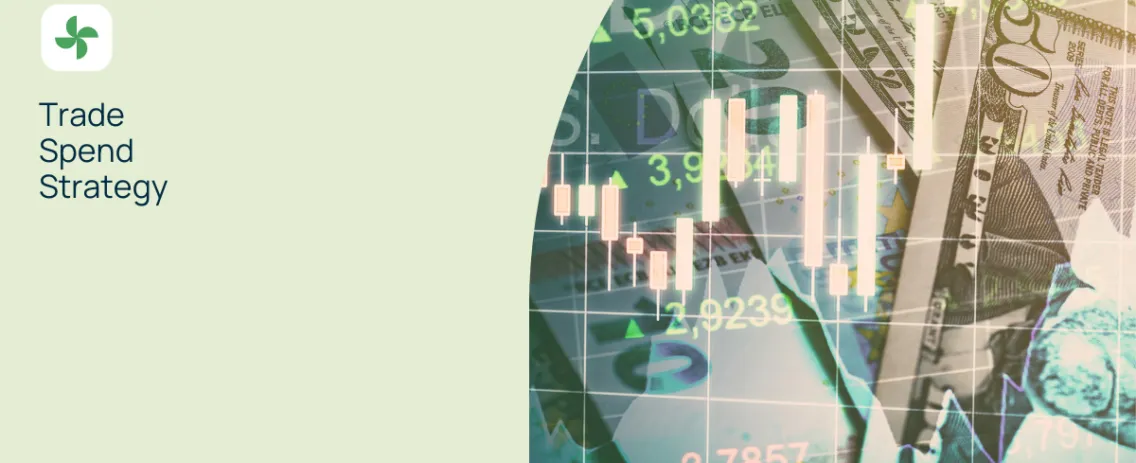
Trade spend strategy: common mistakes and effective tips for success
Your trade spend strategy should be a powerful tool for driving growth and securing market share. To achieve this, crafting a robust strategy requires a delicate balance of foresight, data analysis, and industry insight. However, the exciting journey towards business success is littered with obstacles that can disrupt even the most careful strategies. Mistakes in trade spend strategy can not only lead to financial setbacks but also to missed opportunities and, ultimately, declining market presence.
“The need to transform, optimize, and augment the use of trade spend is a necessity now more than ever. Increasing its maturity will deliver greater levels of profitable revenue.”—Deloitte, Trade spend evolution: Driving higher sales without generating more volume.
In this blog post, we delve into the critical errors that often affect trade spend strategies. We’ll shed light on the missteps that can hinder success and will offer guidance on how to avoid them.
The costly pitfalls of a poor trade spend strategy
Trade spend management is a critical aspect of the CPG industry, but mistakes can significantly impact a company’s bottom line. Here are some common mistakes to avoid:
- Lack of data-driven decision-making. Making trade spend decisions based on intuition rather than insights from data can lead to ineffective strategies.
- Misallocation of trade spend budget. Promotions that don’t align with overall business objectives can mean resources are wasted.
- Ignoring competitor analysis and market trends. Failing to keep up with industry trends and competitor strategies can leave a company at a competitive disadvantage.
A data-driven strategy for optimizing trade spend
Data analytics can play a crucial role in optimizing trade spend strategies. By leveraging data insights, companies can make more informed decisions and drive better results. Key aspects include:
- Utilizing historical data for forecasting and planning. Analyzing past performance can provide valuable insights into consumer behavior as well as promotional effectiveness.
- Implementing predictive modeling for better decision-making. Predictive analytics can help forecast outcomes and help companies optimize trade spend allocation accordingly.
- Incorporating real-time data for agility and responsiveness. Real-time data allows companies to adapt their trade spend strategies quickly in response to changing market conditions and consumer preferences.

Crafting a winning trade spend strategy
A successful trade spend strategy requires careful planning and execution. Here are some essential elements to consider:
- Setting clear objectives and KPIs: Define specific goals and metrics to measure the success of trade spend initiatives.
- Building strong partnerships. Collaborating closely with retailers and partners, creating a win-win strategy for retailers and manufacturers, and building strong partnerships with retailers and other stakeholders are all essential for effective trade spend management.
- Balancing short-term gains with long-term sustainability. While short-term promotions can drive immediate sales, it’s essential to consider the long-term impact on brand equity and profitability.
- Innovating with promotions and pricing strategies. Experiment with different promotional tactics and pricing strategies to find what works best for your brand and target audience.
- Continuous monitoring and adjustment based on performance metrics. Regularly evaluate the performance of trade spend initiatives and adjust strategies accordingly to deliver optimal results.
Technology and tools for trade spend strategy success
Technology can be a significant contributor to trade spend strategy, empowering companies to streamline processes and make data-driven decisions. Some key tools and technologies include:
- Trade spend management software. Dedicated software solutions provide insight into trade spend investments, track and manage budgets, and analyze effective promotions.
- Emerging technologies (AI, machine learning) for trade spend optimization. Advanced analytics tools powered by AI and machine learning can provide deeper insights and predictive scenarios for trade spend optimization.
Collaborative partnerships: strengthening relationships with retailers
Here are some trade spend strategies for fostering collaborative relationships to maximize the effectiveness:
- Fostering strong partnerships with retailers. Establishing trust and open communication with retailers can lead to more mutually beneficial trade spend agreements.
- Strategies for effective negotiation and collaboration. Negotiate trade spend terms that align with your brand’s objectives as well as the retailer’s goals to create win-win strategies that benefit both retailer and manufacturer.
- Co-creating value through joint business planning and execution. Work closely with retailers to develop trade spend initiatives that deliver value to both parties and drive mutual success.

Measuring trade spend success: key metrics and performance evaluation
- Identifying relevant KPIs for trade spend effectiveness. Define specific metrics such as incremental sales lift, promotional ROI, and market share gains to measure the impact of trade spend initiatives.
- Measuring ROI and incremental sales lift. Calculate the ROI of trade spend investments and track the incremental sales generated by promotional activities.
- Assessing promotional lift and cannibalization effects: Evaluate the impact of promotions on overall sales and cannibalization of full-price products.
Takeaways
Crafting a successful trade spend strategy requires careful planning, data-driven insights, and collaborative partnerships between manufacturer and retailer. By avoiding common pitfalls and implementing best practices, companies can optimize their trade spend initiatives. Which in turn helps them drive sustainable growth and market dominance.
Take the first step towards mastering the art of trade spend strategy and pave the way for a brighter future for your brand.
Learn more about the Visualfabriq Trade Spend Master software and arrange a demo today.

.png)

.webp)